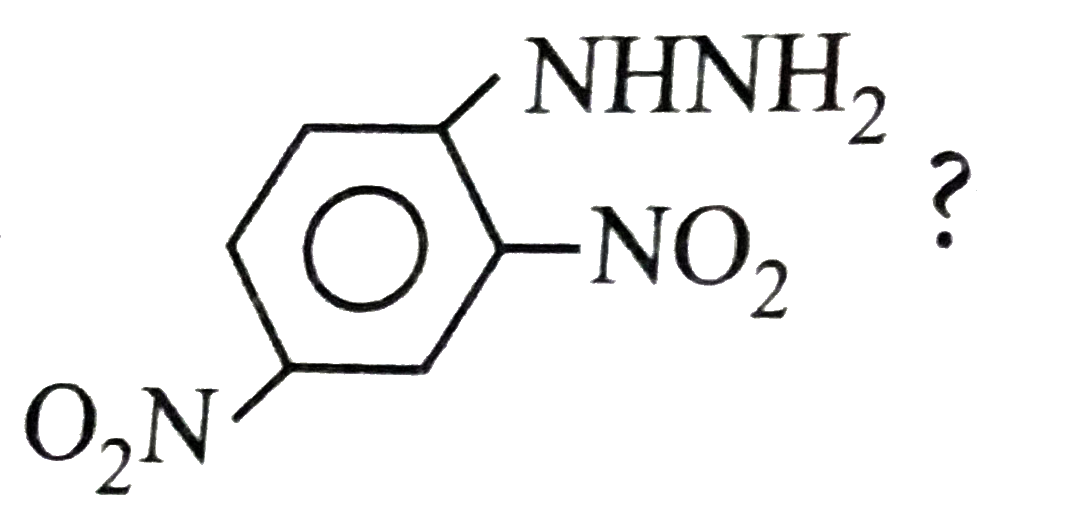Which of the following reactions will not give four-membered cyclic compound ?
a. 
b. 


The correct Answer is:A
To determine which of the given reactions will not yield a four-membered cyclic compound, we will analyze each option step by step.
Step 1: Analyze Option A
- The reaction involves BrCH2(CH2)4Br treated with Mg.
- This reaction leads to the formation of a Grignard reagent: MgBr(CH2)4MgBr.
- Since the Grignard reagent does not involve the formation of a cyclic compound, Option A does not produce a four-membered cyclic compound.
Step 2: Analyze Option B
- The reaction involves a compound that undergoes homolytic bond fission when exposed to light.
- This results in the formation of free radicals, which subsequently combine to form a bond.
- When treated with H2 in the presence of nickel, a four-membered cyclic compound is formed.
- Therefore, Option B does produce a four-membered cyclic compound.
Step 3: Analyze Option C
- The reaction involves two molecules of ethene.
- When exposed to light, these molecules undergo homolytic bond fission, forming free radicals.
- The free radicals from both ethene molecules combine to form a bond, resulting in a cyclobutane ring.
- Thus, Option C also produces a four-membered cyclic compound.
Step 4: Analyze Option D
- The reaction is a Wurtz reaction, where Br + 2Na leads to the formation of a dimer.
- In this case, the reaction does not yield a cyclic compound but rather a linear alkane.
- Therefore, Option D does not produce a four-membered cyclic compound.
Conclusion
After analyzing all options:
- Option A and Option D do not yield four-membered cyclic compounds.
- The correct answer to the question is Option A.
- The reaction involves BrCH2(CH2)4Br treated with Mg.
- This reaction leads to the formation of a Grignard reagent: MgBr(CH2)4MgBr.
- Since the Grignard reagent does not involve the formation of a cyclic compound, Option A does not produce a four-membered cyclic compound.
- The reaction involves a compound that undergoes homolytic bond fission when exposed to light.
- This results in the formation of free radicals, which subsequently combine to form a bond.
- When treated with H2 in the presence of nickel, a four-membered cyclic compound is formed.
- Therefore, Option B does produce a four-membered cyclic compound.
- The reaction involves two molecules of ethene.
- When exposed to light, these molecules undergo homolytic bond fission, forming free radicals.
- The free radicals from both ethene molecules combine to form a bond, resulting in a cyclobutane ring.
- Thus, Option C also produces a four-membered cyclic compound.
- The reaction is a Wurtz reaction, where Br + 2Na leads to the formation of a dimer.
- In this case, the reaction does not yield a cyclic compound but rather a linear alkane.
- Therefore, Option D does not produce a four-membered cyclic compound.
After analyzing all options:
- Option A and Option D do not yield four-membered cyclic compounds.
- The correct answer to the question is Option A.
Topper's Solved these Questions
- ALKANES AND CYCLOALKANESBOOK - CENGAGE CHEMISTRY ENGLISHCHAPTER - ALKANES AND CYCLOALKANESEXERCISE - Archives
13 Videos
- ALKANES AND CYCLOALKANESBOOK - CENGAGE CHEMISTRY ENGLISHCHAPTER - ALKANES AND CYCLOALKANESEXERCISE - MCQ
20 Videos
- ALKENES AND ALKADIENESBOOK - CENGAGE CHEMISTRY ENGLISHCHAPTER - ALKENES AND ALKADIENESEXERCISE - Single correct Answer
14 Videos
Similar Questions
Knowledge Check
Which of the following reactions will give alkyne?
A B
B CH3C−Br∣C∣Br−Br∣C∣Br−CH3Zn,Δ−−−→DH3C−C≡CHHg+2,H2SO4−−−−−−−−→
CH3C−Br∣C∣Br−Br∣C∣Br−CH3Zn,Δ−−−→DH3C−C≡CHHg+2,H2SO4−−−−−−−−→Which of the following compounds will give HVZ reaction?
A B
B C
C D
D
Which of the following compounds will not give SN2 reaction?
A BH2C=CH−ClC
BH2C=CH−ClC D
D
Which of the following reactions will not give propane ?
View SolutionWhich of the following reactions will give alkyne?
View SolutionWhich of the following compounds will not give haloform reaction?
View SolutionWhich of the following reaction gives by isocyanide
View SolutionWhich of the following compounds will give a coloured crystalline compound with
 ?
?
View Solution
